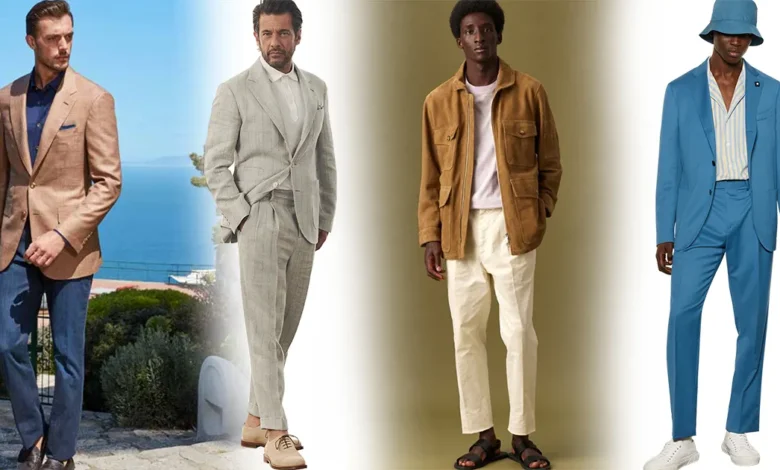Italian Menswear Icons: A Deep Dive into Tailoring, Denim, and Modern Luxury

Fashion is rarely about one single element—it is the harmony of fabrics, cuts, heritage, and the designers shaping modern wardrobes. Italian menswear continues to set a global benchmark, blending centuries of craftsmanship with contemporary needs. Below is a quick overview of the designers and pieces explored in this article:
| Designer / Brand | Known For | Distinctive Qualities |
| Kiton | Tailoring & casualwear | Precise cuts, Neapolitan tailoring |
| Isaia | Sartorial suits | Bold details, red coral emblem |
| Premiata | Footwear | Hybrid design, Italian innovation |
| Hugo Boss | International ready-to-wear | Sharp, modern cuts |
| Brunello Cucinelli | Casual luxury | Ethical craftsmanship, neutral palettes |
The following sections unpack how these names fit into the broader narrative of Italian menswear and global fashion today.
The Legacy of Kiton Clothing
Heritage in Italian tailoring is often tied to small family workshops and artisanal communities. Few embody this better than Kiton clothing. The brand’s approach has always emphasized handwork, with each garment passing through multiple master artisans before completion. Known for sourcing rare fabrics like vicuña, cashmere, and silk blends, Kiton maintains a standard that blurs the line between everyday wear and heirloom pieces.
What makes Kiton significant is not just the materials, but also its commitment to traditions of Neapolitan tailoring. Shorter jackets, natural shoulders, and subtle waist suppression all play into the relaxed yet structured silhouettes that define the label. Unlike mass-market fashion, Kiton’s output is small, often ensuring that attention to detail never falters. This exclusivity has helped them cultivate a reputation among serious collectors of fine menswear.
Kiton Suits: A Study in Neapolitan Tailoring
The Neapolitan school of tailoring differs from the British Savile Row tradition. Instead of rigid formality, it leans toward natural shapes and comfort. Kiton suits demonstrate this philosophy at its highest level. The jackets feature lighter canvassing, soft lapels, and an easy drape, all designed for movement and wearability without sacrificing refinement.
- Construction methods: Each suit can involve more than 20 hours of manual work.
- Fabric selection: Wool blends are often woven in-house or sourced from exclusive mills.
- Styling options: Double-breasted blazers, single-breasted jackets, and bespoke variations cater to both traditional and modern wardrobes.
Kiton suits are as much about functionality as they are about aesthetics. They are designed to fit into the lifestyles of executives, creatives, and individuals who value discretion in luxury. The Neapolitan suit, in essence, is less about commanding attention and more about understated mastery.
Denim Culture and Kiton Jeans
While tailoring dominates discussions around the brand, Kiton jeans show how Italian luxury labels approach casualwear. Jeans here are not mass-produced denim; they undergo a process that mirrors suit-making in terms of attention to cut and finishing.
Unlike rugged American denim, Kiton’s version prioritizes comfort and refinement. Fabrics are often blended with elastane for stretch, washed for a lived-in look, yet stitched with precision. Details like hand-stitched buttonholes and unique hardware distinguish them from standard premium jeans. For the modern man, Kiton jeans provide a versatile bridge between casual settings and semi-formal outfits when paired with tailored blazers or fine knitwear.
This fusion of denim with artisanal methods reflects the broader movement in menswear—where comfort does not equate to sacrificing craftsmanship.
Isaia and the Red Coral Tradition
Another Neapolitan name, Isaia, represents a parallel story of tailoring innovation. Founded in Naples in the 20th century, Isaia carries the distinctive red coral emblem, an ancient Mediterranean good-luck symbol. The brand distinguishes itself by introducing bold colors, creative lining patterns, and playful twists on otherwise traditional silhouettes.
Isaia’s tailoring language is less restrained than Kiton’s. Where Kiton emphasizes subtlety, Isaia experiments with brighter palettes and experimental checks, often appealing to younger audiences or those willing to push boundaries. Despite this, Isaia maintains fidelity to the craft of Neapolitan tailoring—soft jackets, light canvassing, and artisanal finishing remain core to their DNA.
Isaia embodies the dialogue between tradition and modernity: it respects its roots while deliberately bending the rules of sartorial dress.
Footwear Innovation Through Premiata
Italian luxury is not only about suits and tailoring. Footwear brands such as Premiata embody the versatility of Italian design. Founded in the late 19th century, Premiata has shifted from traditional shoemaking to contemporary sneaker culture. The hybrid design—part sneaker, part lifestyle shoe—has found a strong following among those who want quality with modern functionality.
Premiata’s value lies in merging old-world craftsmanship with new aesthetics. Leathers are still carefully selected, soles are engineered for comfort, and yet the designs align with streetwear and athleisure trends. This ability to adapt without losing authenticity places Premiata in a unique niche: neither purely luxury nor purely streetwear, but an intersection that feels distinctly Italian.
For today’s global wardrobe, where sneakers are as common in boardrooms as they are in city streets, Premiata has become a noteworthy choice.
The Global Appeal of Hugo Boss
While rooted in Germany, Hugo Boss has long maintained a strong presence in the international luxury market. The brand gained prominence for its suits, particularly in the late 20th century, offering sharp cuts and consistent quality at scale. Unlike artisanal houses such as Kiton or Isaia, Hugo Boss built its reputation on accessibility and international reach.
Boss suits, shirts, and accessories continue to be staples for professionals worldwide. Their approach leans more industrial than artisanal, yet it remains central to the global conversation on men’s tailoring. The sleek aesthetic of Hugo Boss makes it a practical choice for those seeking reliable, contemporary wardrobes without necessarily entering the bespoke or semi-bespoke market.
This contrast between artisanal Neapolitan tailoring and industrial German precision shows the diversity in global menswear traditions.
Brunello Cucinelli and Ethical Luxury
Brunello Cucinelli represents another side of Italian menswear: casual luxury with a strong ethical foundation. Often described as the “King of Cashmere,” Cucinelli built his empire on soft tailoring, knitwear, and a muted palette of beiges, grays, and creams. Unlike the boldness of Isaia or the formality of Kiton, Cucinelli’s vision revolves around understated elegance suitable for relaxed lifestyles.
Equally significant is the brand’s business philosophy. The company is based in Solomeo, a restored medieval village in Umbria, where Cucinelli has reinvested profits into community development, education, and cultural preservation. This model of “humanistic capitalism” has become part of the brand’s identity, proving that luxury fashion can integrate ethical considerations without sacrificing desirability.
Cucinelli’s clothing resonates strongly with individuals who value both comfort and responsibility in their fashion choices.
Conclusion
Italian menswear, and its global counterparts, reveals how fashion is a dialogue between tradition and change. Kiton stands as the exemplar of precise Neapolitan tailoring, while Isaia injects color and energy into the same school of craftsmanship. Premiata shows that sneakers can carry the same weight of cultural relevance as fine shoes, and Hugo Boss proves the appeal of industrial precision. Brunello Cucinelli, finally, highlights how ethics and aesthetics can intertwine within the luxury sector.
These brands together narrate a broader story of how clothing serves as more than utility—it is culture, history, and innovation stitched into fabric. By understanding them, readers can appreciate the full spectrum of what contemporary menswear has to offer.





